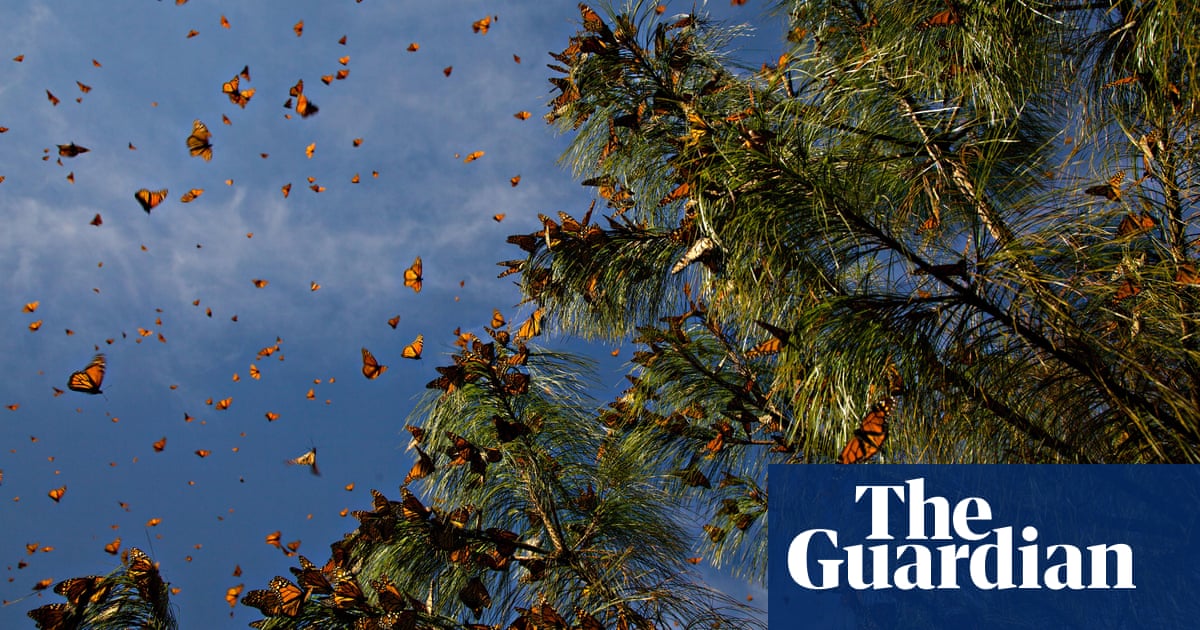I have dedicated far too much of my life to hating this ugly plant. It’s time to rip them out | Emily Mulligan

On my birthday I made time for my one true passion. Hating agapanthus.
I was walking my kids to school, taking time from their precious blink-and-you’ll-miss-it childhoods to seethe and take a picture of the revolting, saggy mess of agapanthus on the way. I have urgently supplied this picture to the Guardian and I’m ready and willing to speak out further.
If you’re thinking “what’s an agapanthus, what is this woman on about, I don’t know what this is” – yes you do! One of the many dispiriting traits of agapanthus is that they’re everywhere. They’re a forgettable, green-tongued plant, with green stalks that stand tall and occasionally produce globes of purple or white flowers. Or as one local council website described: “Flowers are borne in terminal umbels on erect stems.”
Plant people really have a way with words.
I hate them because they’re ugly. They’re daggy. The colour palette is cringe and as much as anything of the natural world can be, they’re dated.
Beside their crimes against my aesthetic sensibilities, they also suck up water, are impossible to remove, spread seeds like crazy, are an environmental pest, can be poisonous and attract snakes. Just one plant can quickly grow into an unsightly clump. They’re a dreadful, boring landscaping choice for their hardiness and how successfully they grow everywhere. They’re an inescapable part of so many of our public places. I don’t remember agreeing to this.
I’m prepared to admit their one useful application is that they’re so moist and sappy (a combination of words ready to make me gag) that they have been hailed as fire breaks.
But it proves my point. Let’s not pretend they are a logical choice. Can we stop and think before planting environmental pests or letting a seemingly harmless, unsightly shrub take over?
When a right-minded person comes along and wants to remove the eyesores, they need earth moving equipment. A small, pathetic not-worthy-of-the-name shrub should not be able to withstand fully grown adults’ efforts. And yet they do! Their roots dig in wide and deep and proliferate into formidable clumps meaning it’s often more effort than people can summon to remove them. Did I mention the leaves and roots are poisonous? Give me a spiky, practical, hardy native shrub any day (agapanthus are native to South Africa).
I was recently in New Zealand, on a perfect day, on a gorgeous island, surveying a small cove, the turquoise water positively sparkling. I spent a moment admiring my luck, feeling the sun on my skin. I took a picture. Only then was my peace disturbed by noticing them everywhere. Agapanthus. Obviously growing feral all over yet another landscape where they don’t belong. I responded normally with a twenty minute-plus diatribe, receiving a generous “yes dear” from my longsuffering, absolutely not a plant guy husband.
Keeping with the being normal theme, I continued to notice them spilling from gardens all over town, buffeted up on steep cliffs, growing places they had no business to be. Spending my time on earth Googling such things, I learned that the City of Auckland has a warning against planting, selling or distributing agapanthus. It’s a nod to good taste and one that should be emulated all over Australia. They’re a pest to our eyes as well as our digestive systems.
But maybe this is the value in picking an enemy and preoccupation that isn’t aware you exist. Spending time on my birthday and on my precious holiday being mad about a plant with purple flowers I don’t care for is a lot easier to bear and potentially even fun in the face of Very Serious World Events.
If I had any upper body strength or a mid-sized earth moving machine I could more directly take on my little enemies, at least the ones along the route to school. But as it is, I will indulge this passion from this safe position behind a pink laptop and hope to find some comrades in the comments. I know the landscaper forums are with me on this.
So let us have our fun. Wishing, hoping, posting for the eradication of an invasive pest species.
Source link






